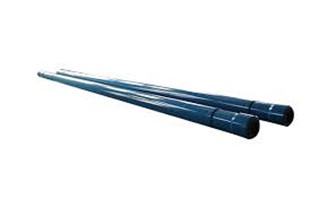Screw drill tools are widely used in oil and gas exploration and extraction. They mainly consist of a rotating mechanism, drill pipes, drill bits, and a drilling fluid system.
Here is a detailed description of the working principle of screw drill tools:
- Rotating Mechanism: The rotating mechanism of screw drill tools is typically driven by the hydraulic system of a drilling rig or drill machine. This mechanism provides continuous and stable rotational power, ensuring that the drill bit can smoothly penetrate the ground. It not only delivers rotational force but also maintains the axial stability of the drill pipes and drill bit, ensuring the drill bit remains vertical during drilling.
- Drill Pipes: Drill pipes connect the drill bit to the rotating mechanism and are usually composed of multiple long steel tubes. These tubes are connected by threaded joints to ensure stability and strength. During the drilling process, the rotating mechanism transmits rotational force to the drill pipes, which then transfers it to the drill bit, allowing it to drill effectively into the formation.
- Drill Bit: The drill bit is a crucial component of the screw drill tool, responsible for cutting through the formation to extract minerals. Drill bits are typically made from high-strength, wear-resistant materials to withstand intense conditions of high pressure and temperature. The front of the drill bit is equipped with cutting teeth that cut the formation into small fragments through rotation and downward force, which are then brought to the surface.
- Drilling Fluid System: During drilling, the drilling fluid serves multiple purposes, including cooling, lubricating, cleaning, and controlling formation pressure. The drilling fluid cools the drill bit and drill pipes while carrying drill cuttings from the wellbore to the surface. Additionally, it can help remove any natural gas or oil present in the formation, enhancing the safety of the drilling process.
- Drilling Process: The drilling process with screw drill tools involves two main stages: drilling and withdrawal. During drilling, the rotating mechanism provides rotational force to gradually lower the drill bit to the wellbore. The drill bit cuts through the formation, generating drill cuttings, which are carried to the surface by the drilling fluid. As the drill bit progresses through the formation, new drill pipes are added from the surface to extend the length of the drill string. During withdrawal, the rotating mechanism slowly lifts the drill pipes out of the wellbore until the drill bit is fully retracted.
In summary, screw drill tools utilize a rotating mechanism to provide stable rotational force, enabling the drill bit to effectively penetrate the ground. The drill bit cuts through the formation, generating cuttings that are transported to the surface by the drilling fluid system. Screw drill tools are efficient and reliable drilling instruments, playing a critical role in oil and gas exploration and extraction.
Post time: Sep-05-2024





